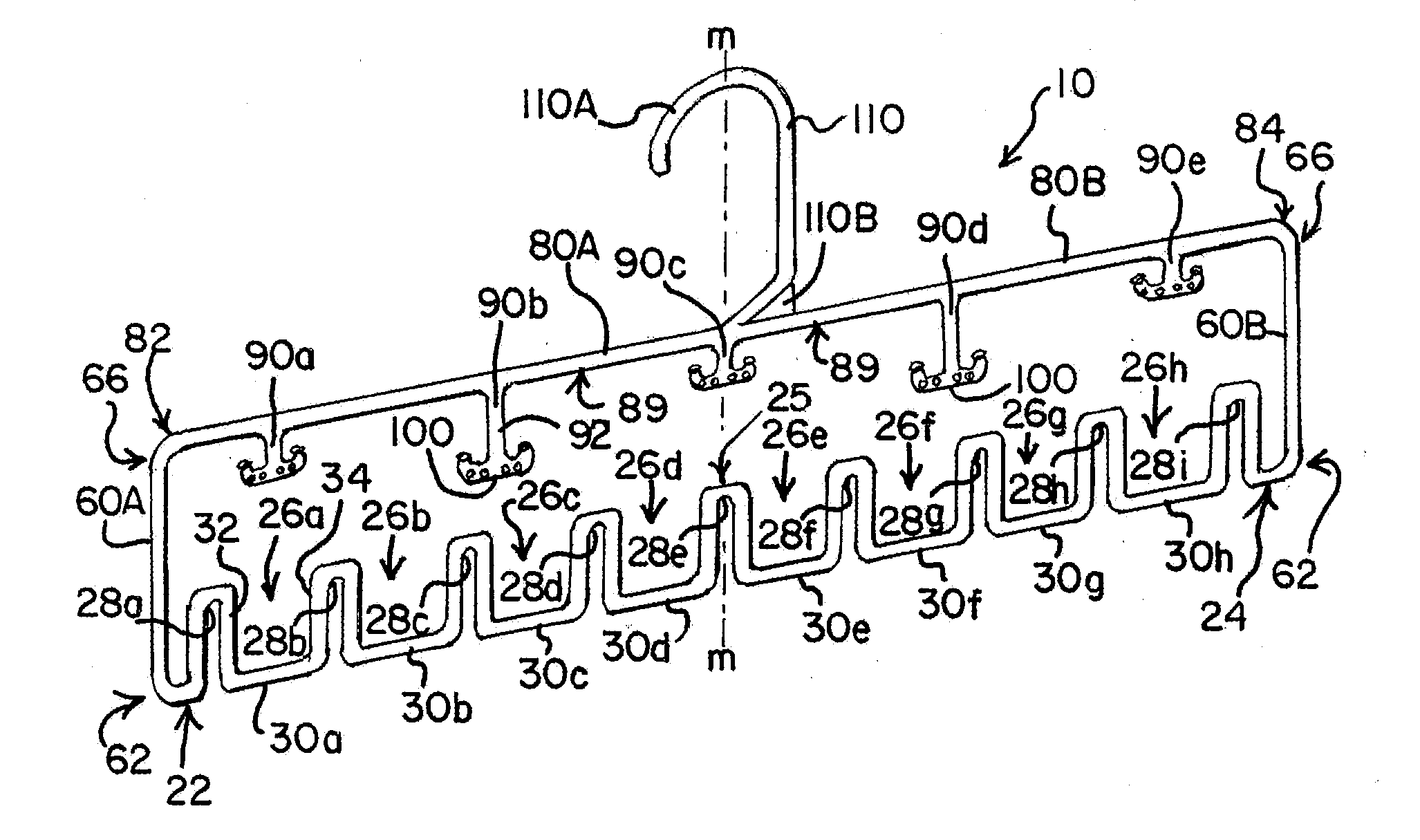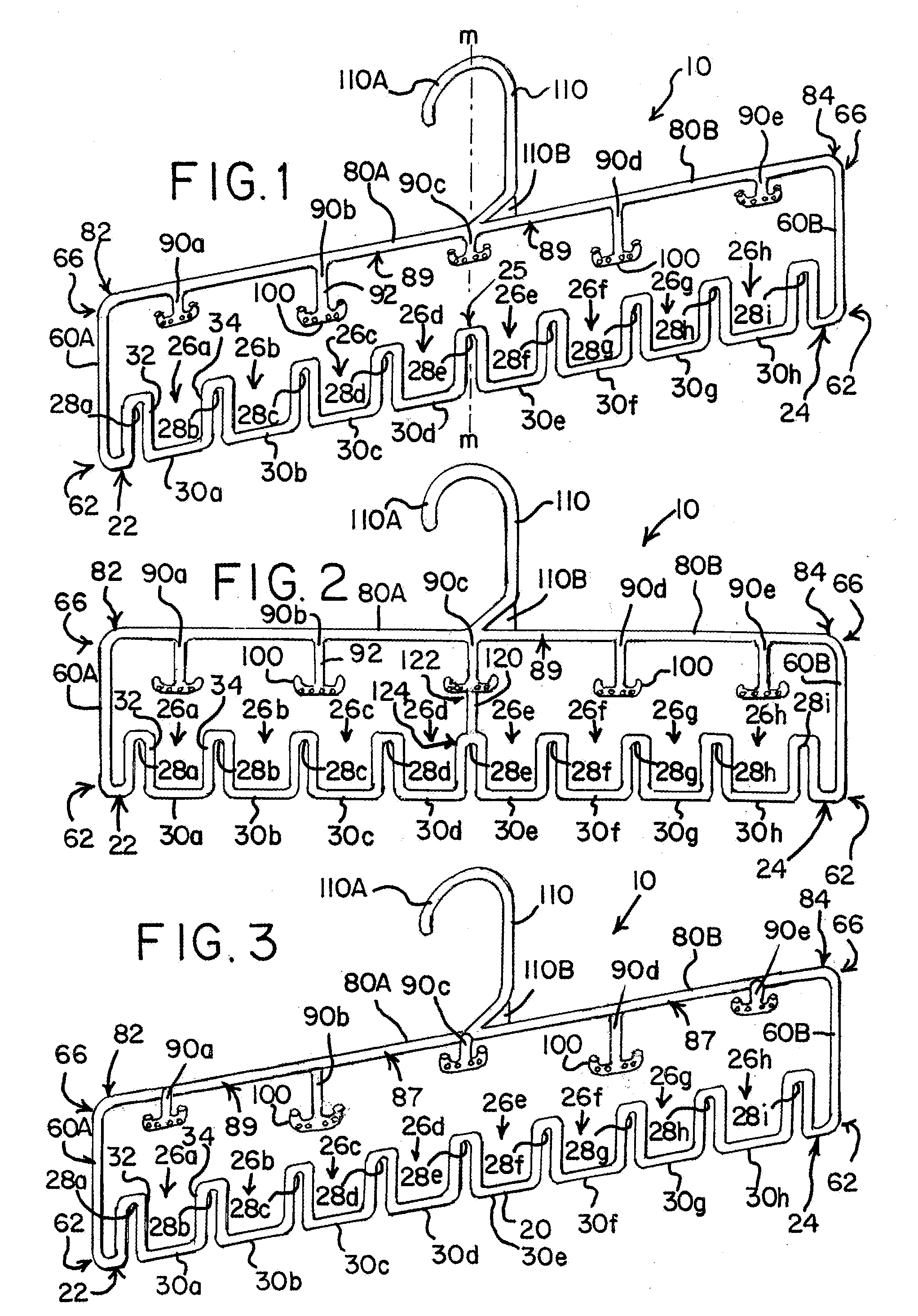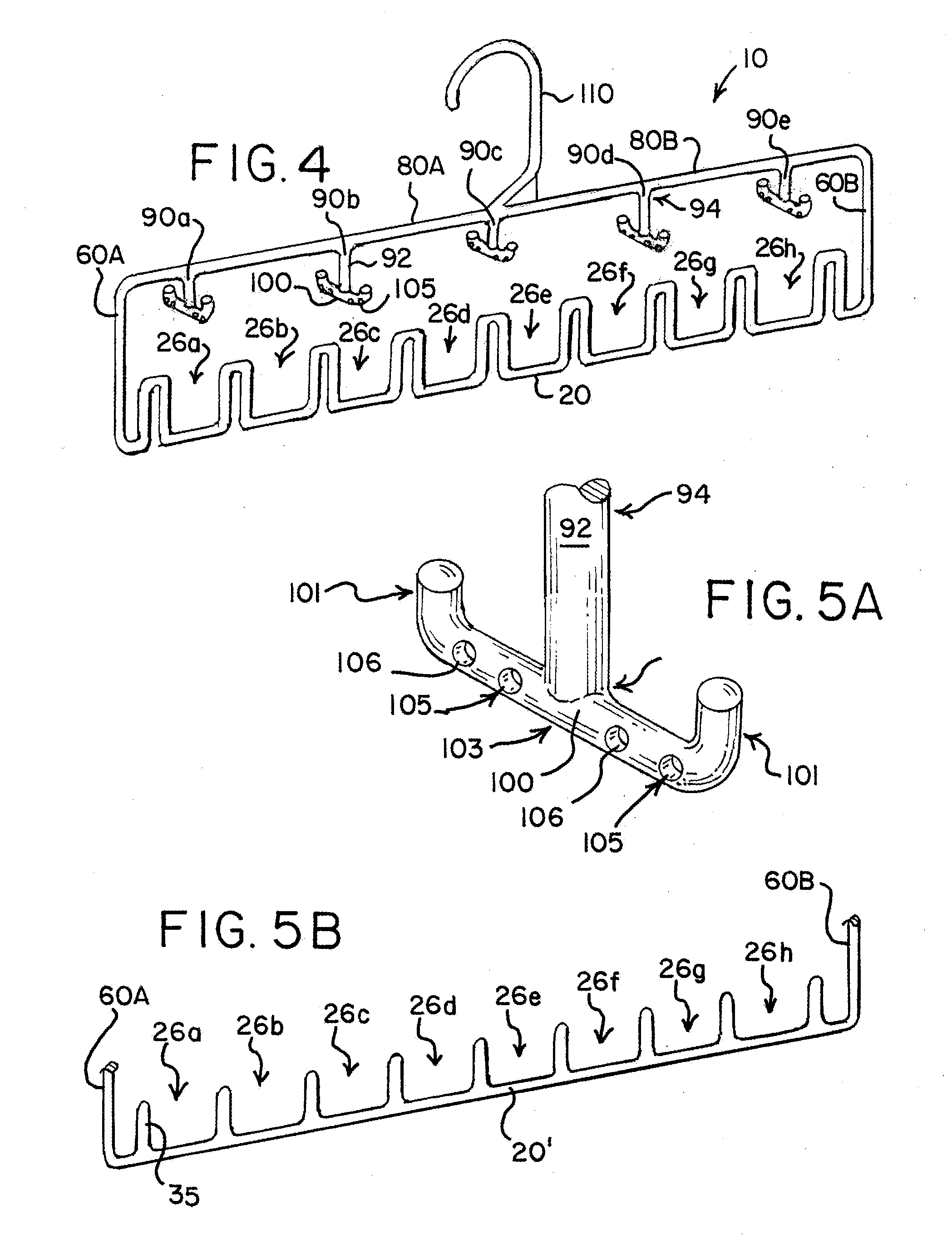Multifunctional clothing hanger
a multi-functional, hanger technology, applied in the field of hangers, can solve the problems of inefficient use of the standard hanger, inefficient use of the usually limited storage space, and inefficiency of the use of the space in the clos
- Summary
- Abstract
- Description
- Claims
- Application Information
AI Technical Summary
Benefits of technology
Problems solved by technology
Method used
Image
Examples
Embodiment Construction
[0022]Referring now to the characters of reference in the drawings and more particularly to FIG. 1, a preferred style of the multi-functional clothing hanger of the invention 10 is illustrated. A more conventional style of clothing hanger which also incorporates various aspects of the invention is illustrated in FIG. 6. With either style type, clothing hanger 10 is defined by an integrally formed frame that is of a uniform cross section that is preferably configured to have a round geometrical shape and which is composed of a synthetic, molded plastic material or the like. Although a round cross section is preferred and is exclusively shown in the drawing figures, certain other geometrically shaped cross sections having multiple sides also work well to form the hanger frame such as a square, hexagon, octagon, etc. In the preferred embodiment of the invention, the frame of the clothing hanger is comprised of a cross bar 20 member having a pair of ends 22,24, two identical connecting ...
PUM
 Login to View More
Login to View More Abstract
Description
Claims
Application Information
 Login to View More
Login to View More - R&D
- Intellectual Property
- Life Sciences
- Materials
- Tech Scout
- Unparalleled Data Quality
- Higher Quality Content
- 60% Fewer Hallucinations
Browse by: Latest US Patents, China's latest patents, Technical Efficacy Thesaurus, Application Domain, Technology Topic, Popular Technical Reports.
© 2025 PatSnap. All rights reserved.Legal|Privacy policy|Modern Slavery Act Transparency Statement|Sitemap|About US| Contact US: help@patsnap.com



